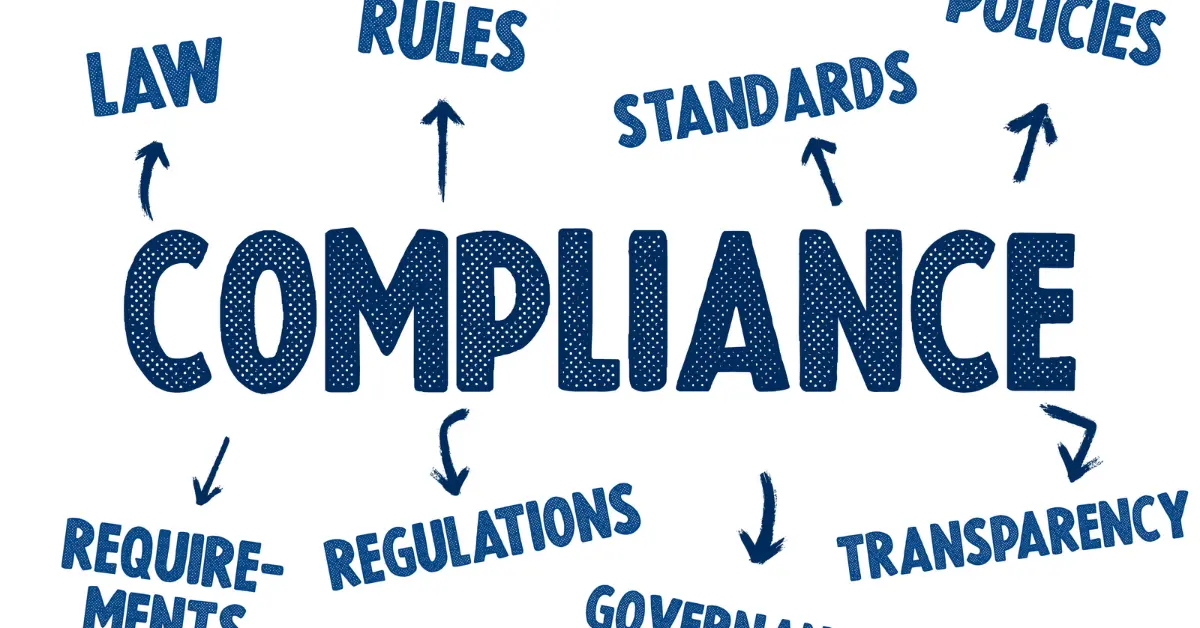Returns on investment and market shares are great, but they mean little if your business is jeopardizing the well-being of your employees and the environment. As a responsible organization, making Environmental, Health, and Safety (EHS) compliance a top priority is crucial. The consequences of neglecting EHS regulations can be severe, from massive fines to legal headaches and even accidents in the workplace.
Maintenance, not catastrophe, should be your focus when it comes to EHS compliance. By staying proactive and prioritizing environmental responsibility, you can prevent problems before they arise and create a work environment that’s both safe and healthy.
Key Takeaways:
- EHS Compliance Priority: Prioritizing Environmental, Health, and Safety (EHS) compliance is essential for protecting employees and the environment, and avoiding severe fines and legal issues.
- Benefits: EHS compliance boosts employee morale, productivity, and company reputation while saving money by reducing accident-related costs.
- Key Components: Effective EHS compliance involves hazard assessment, safety policies, employee training, regular inspections, and accurate record-keeping.
- Regulations: Adherence to OSHA and EPA regulations, along with industry-specific standards, is crucial for maintaining EHS compliance.
- Proactive Measures: Regular risk assessments, comprehensive policies, continuous training, thorough documentation, and EHS software are vital for ongoing compliance and fostering a safety-first culture.
What is EHS Compliance?
EHS compliance is a critical aspect of running a successful business. It involves adhering to environmental, health, and safety regulations set by governing bodies like OSHA and the EPA. The goal is to create a safe working environment for employees while minimizing the company’s environmental impact.
Slip up on EHS compliance and you’re staring down the barrel of hefty fines, legal woes, and a badly bruised company reputation. Worse still, you’ll be putting your workers’ lives on the line. No one wants that kind of weight on their conscience.
Importance of EHS Compliance
When you prioritize workplace safety, you’re sending a clear message to your employees: you care about their well-being. EHS compliance isn’t just about avoiding fines; it’s about creating a safe environment where people can thrive.
Plus, a safe working environment boosts morale and productivity. Workers who feel protected are more likely to stick around and give their best effort. It’s a win-win for everyone involved.
Key Components of EHS Compliance
So, what goes into EHS compliance? It’s a multifaceted approach that includes:
- Identifying and assessing potential hazards.
- Developing and implementing safety policies and procedures.
- Providing proper training and equipment to employees.
- Conducting regular inspections and audits.
- Maintaining accurate records and documentation.
It’s a lot to keep track of, but EHS software (My Momentum) can help streamline the process. Trust me, it’s worth the investment.
Benefits of Maintaining EHS Compliance
Aside from the obvious benefit of keeping your employees safe, maintaining EHS compliance has some serious perks for your business. For one, it can save you money in the long run by reducing costs associated with accidents, injuries, and legal issues.
It also helps you stay competitive in your industry. Customers and clients are increasingly looking for companies that prioritize sustainability and social responsibility. By demonstrating your commitment to EHS compliance, you can attract new business and build a positive reputation.
Understanding EHS Regulations and Industry Standards
Navigating the complex world of EHS regulations and industry standards can feel like a challenging task. However, it’s essential to stay on top of these requirements to ensure ongoing compliance and avoid potential safety issues.
The first step is identifying which regulations apply to your specific industry and operations. This can vary depending on factors like your location, the nature of your business, and the materials you work with. It’s a good idea to consult with EHS legal experts or industry associations to get a clear understanding of your obligations.
OSHA Regulations
In the United States, the Occupational Safety and Health Administration (OSHA) sets and enforces standards for workplace safety. These regulations cover a wide range of topics, from fall protection and hazard communication to respiratory protection and machine guarding.
OSHA also requires employers to provide training, conduct regular inspections, and maintain records of workplace injuries and illnesses. Failing to comply with these regulations can result in citations and substantial fines.
EPA Regulations
The Environmental Protection Agency (EPA) is responsible for protecting human health and the environment. This includes regulating air emissions, water discharges, and waste management practices.
Depending on your industry, you may need to obtain permits, conduct environmental assessments, and implement pollution prevention measures to comply with EPA regulations. It’s crucial to stay up-to-date with any changes or updates to these requirements.
Industry-Specific Standards
In addition to federal regulations, many industries have their own voluntary consensus standards that establish best practices for safety and environmental stewardship. For example, the American National Standards Institute (ANSI) develops guidelines for everything from personal protective equipment to fall protection systems.
Adhering to these industry standards can help you stay ahead of the curve and demonstrate your commitment to EHS excellence. Plus, many customers and clients now expect their vendors and suppliers to meet these higher standards.
Staying Up-to-Date with Regulatory Changes
One of the biggest challenges of EHS compliance is keeping pace with the constantly changing regulatory landscape. New rules and requirements are introduced all the time, and it’s up to you to stay informed and adapt your policies and procedures accordingly.
This is where EHS management software can be a lifesaver. These tools can help you track regulatory changes, manage compliance tasks, and document your efforts to verify compliance. Trust me, it’s a lot easier than trying to do it all manually.
Implementing an Effective EHS Compliance Program
Alright, so you know the importance of EHS compliance and you’ve got a handle on the regulations and standards that apply to your business. Now it’s time to put that knowledge into action by implementing an effective EHS compliance program.
This isn’t a one-and-done deal – it’s an ongoing process that requires commitment, resources, and continuous improvement. But trust me, the effort is well worth it when you consider the benefits to your employees, your business, and your bottom line.
Conducting Risk Assessments
The first step in any good EHS compliance program is conducting a thorough risk assessment. This means taking a hard look at your workplace and identifying potential hazards that could cause harm to your employees or the environment.
This could include everything from physical hazards like slips and falls to chemical hazards like exposure to toxic substances. Once you’ve identified these risks, you can develop strategies to eliminate or control them.
Developing Safety Policies and Procedures
Based on your risk assessment findings, you’ll need to develop comprehensive safety policies and procedures to address each identified hazard. These should be written clearly, easy to understand, and communicated to all employees.
Your policies should cover topics like proper use of personal protective equipment, safe handling of hazardous materials, emergency response procedures, and reporting requirements for accidents and near misses.
Employee Training and Education
Of course, even the best safety policies are useless if your employees don’t know about them or understand how to follow them. That’s why employee training and education is such a critical component of any EHS compliance program.
You’ll need to provide initial training for new hires, as well as ongoing training for all employees to keep their knowledge and skills up-to-date. This could include everything from classroom sessions to hands-on demonstrations and drills.
Recordkeeping and Documentation
To demonstrate your commitment to EHS compliance, you’ll need to maintain accurate records and documentation of your efforts. This could include training records, inspection reports, incident investigations, and corrective action plans.
Not only does this help you stay organized and on track, but it also provides valuable evidence in the event of an audit or legal issue. Plus, it allows you to track your progress over time and identify areas for improvement.
Utilizing EHS Software Solutions
Managing all of these moving parts can be a challenge, especially for larger organizations with multiple locations and complex operations. That’s where EHS software solutions can help streamline the compliance process.
These tools can help you automate and streamline many of the tasks associated with EHS compliance, from scheduling inspections and training to tracking incidents and generating reports. They can also provide valuable insights and analytics to help you make data-driven decisions about your program.
Best Practices for Maintaining EHS Compliance
Implementing an EHS compliance program is a great start, but the real challenge is maintaining that compliance over time. It’s not enough to just set it and forget it – you need to be proactive and vigilant to ensure that your program remains effective and up-to-date.
Here are some best practices to help you stay on top of your EHS compliance game:
Regular Audits and Inspections
To stay on top of ongoing compliance, make regular audits and inspections a habit. This can include daily safety sweeps, weekly checks, and annual deep dives to ensure everything is up to par.
Avoid letting small problems balloon into major headaches by catching them early. As you work to resolve each issue, be sure to capture your findings and the actions you take to fix them – it’s the key to continuous improvement.
Continuous Improvement Strategies
Think of EHS compliance as a marathon, not a sprint. It takes ongoing effort and dedication to refine your program and stay ahead of the curve.
In today’s fast-paced business landscape, complacency is not an option. To thrive, you need to be proactive and committed to ongoing learning and improvement. This might involve leveraging new technologies, revising your policies, or upskilling your team – whatever it takes to stay ahead of the curve.
Fostering a Culture of Safety
At the end of the day, EHS compliance is everyone’s responsibility. It’s not just up to the safety manager or the HR department – it’s a team effort that requires buy-in from every level of the organization.
A safety-first culture is crucial in the workplace. This involves prioritizing safety above all else, fostering open lines of communication, and acknowledging employees who consistently demonstrate safe practices.
Effective Communication and Reporting
The most effective way to identify and address potential safety hazards is by fostering an open-door policy. This means providing employees with multiple avenues to report incidents, near misses, and safety concerns, such as an anonymous hotline or a designated email address, and regularly gathering as a team to discuss safety issues.
Foster an environment where employees feel empowered to speak up, and be sure to follow through on those concerns. Transparency is key, so don’t forget to circle back with your team on the outcomes.
Consequences of Non-Compliance and How to Avoid Them
We’ve talked a lot about the benefits of EHS compliance, but let’s be real – the consequences of non-compliance can be severe. And I’m not just talking about fines and penalties (although those can certainly add up).
The true cost of non-compliance is much higher when you consider the potential for workplace injuries, environmental damage, and reputational harm. It’s a risk that no business can afford to take.
Financial Penalties and Legal Liabilities
Facing an OSHA fine can be a costly mistake. The penalties can add up quickly, ranging from a few thousand dollars to a whopping $100,000 or more for a single violation. And if you’re found guilty of multiple violations or a pattern of non-compliance, the financial burden can be crushing.
But the financial risks don’t stop there. If an employee is injured on the job due to a safety violation, you could be on the hook for workers’ compensation claims, medical expenses, and even legal fees if the case goes to court.
Reputational Damage
A company’s reputation is fragile, and non-compliance can shatter it in an instant. One safety violation or environmental incident can go viral on social media, causing irreversible damage to your brand.
Make one wrong move during a crisis, and you might as well be playing with fire: you could spark a PR nightmare that can smolder for years, charring your reputation and driving away customers in the process.
Workplace Accidents and Injuries
Of course, the most devastating consequence of non-compliance is the potential for workplace accidents and injuries. No one wants to see their employees get hurt on the job, but the reality is that it happens far too often.
According to the Bureau of Labor Statistics, there were over 2.8 million nonfatal workplace injuries and illnesses reported in the private industry in 2019 alone. And that doesn’t even include the thousands of fatal incidents that occur each year.
Proactive Measures to Ensure Compliance
So, how can you avoid these consequences and ensure ongoing compliance with EHS regulations? The key is to be proactive and take a comprehensive approach to safety management.
This means conducting regular risk assessments, developing and implementing effective safety policies and procedures, providing thorough employee training, and maintaining accurate records and documentation.
It also means staying up-to-date with changing regulations and industry standards and continuously improving your program over time. And don’t forget the importance of leadership commitment and employee engagement in creating a true culture of safety.
By taking these proactive measures, you can minimize the risk of non-compliance and create a safer, healthier workplace for everyone involved. It’s not always easy, but it’s always worth it to stay compliant and keep your workers safe.
EHS Compliance: Final Thoughts
Navigating the complex world of EHS compliance can seem overwhelming, but it’s a critical aspect of running a successful and responsible business. By understanding the relevant regulations, conducting thorough risk assessments, and implementing effective policies and procedures, you can create a safer, healthier, and more sustainable workplace.
It’s time to rethink EHS compliance. Rather than viewing it as a tedious obligation, make it a core part of your business DNA. By doing so, you’ll not only reduce costs related to accidents and injuries but also foster a culture of care and responsibility. The result? A business that’s built to last, with a reputation that precedes it.
Raise the bar on your environmental, health, and safety practices by taking a closer look at what’s working and what’s not. Invest in the tools and training your team needs to stay ahead of the game, and you’ll be rewarded with a safer, more sustainable work environment that benefits everyone. For more information on helping your company stay compliant, contact EHS Momentum today.







